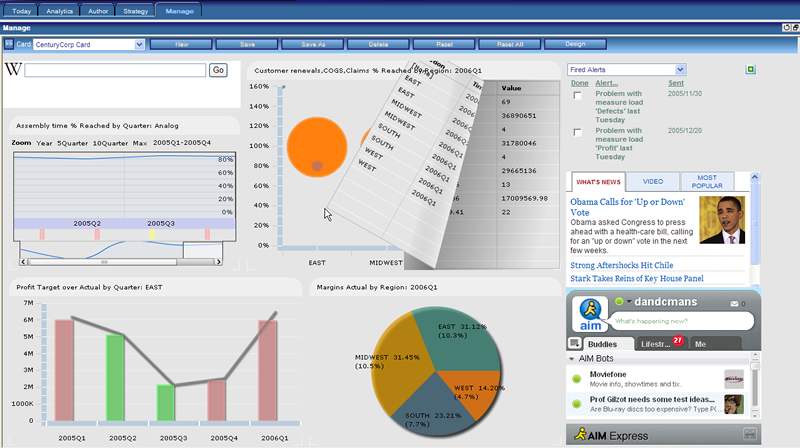Data Driven Science is Taking Over Business
Business Intelligence (BI) is an umbrella term used to refer to a variety of software applications that provide key insights into the functioning of an organization. BI analyzes huge volumes of enterprise data, detecting hidden trends and patterns, tracking business performance and assisting business users to make improved decisions based on real time data. Common functions of BI are reporting, data mining, process mining, complex event processing, text mining, benchmarking, predictive analytics and prescriptive analytics. The goal being to take complex, unstructured data and make it comprehensible in relation to business decisions.
Making Complex Data Accessible
BI can help organizations identify cost-cutting ideas, uncover business opportunities, combine raw data into accessible reports, react quickly to retail demands, give leverage in negotiations and optimize prices. BI applications can make complex data more accessible and allow companies to start analyzing data without waiting for their Information Technology department to run complex reports. Traditionally business intelligence systems were delivered via paper reports, but part of the accessibility of BI today is the interactive reports, spreadsheets, graphs, charts and spreadsheets offered online, in visually attractive formats.
Business Intelligence systems are also designed to collect and consume data from multiple systems. This means long standing areas of data collection in organizations, such as, Enterprise Resource Planning (ERP), Customer Relationship Management (CRM), Supplier Relationship Management (SRM) and Human Resources (HR) can be fed into the BI software to give a more informed result. Information on customers, personnel, supply chain information, product data, manufacturing data, sales and marketing activity as well as much more can be collected and fed into BI software. BI allows businesses to integrate disparate data sources into one coherent frame-work.
BI and Social Media
Raw data from social media sites is also being fed into BI applications. Collecting information on customer demographics, search habits, and social behaviors online can uncover patterns, which in turn, can increase revenue opportunities, push marketing efforts and raise brand awareness. A way in which this is being done, is by the creation of algorithms that can predict future trends and events. Many sites are already implementing these strategies. Take Amazon for example, the site uses algorithms to propose future products to their customers based on the customer’s past transactions. Facebook also uses algorithms to create targeted advertisements that will be seen directly by their target audience. BI in conjunction with social media is the future of marketing online. BI, however, is not only about marketing. It has different functions depending on the industry.
BI According to Industry
BI differs from industry to industry and the companies already implementing BI are varied. According to tech news and analysis site CIO.com, restaurant chains in North America, such as, Wendy’s, Hardee’s and T.G.I. Friday are all heavy users of BI systems. They use BI to renegotiate contracts with food suppliers, to decide what new products to add to their menus, which dishes to remove and which underperforming stores to close.
Another surprising industry using BI is sport. Professional sports teams can use data and analytical models both on and off the field. BI software can help the team select new players and off field to improve the experience for fans. Data on stadium food, parking, personnel, and bathroom cleanliness are measured and fed into BI applications to improve experience and increase revenue.
The Future of BI
The number of business embracing BI platforms is steadily growing. According to a recent study by American research and advisory firm, Gartner, the global BI and analytics market will grow to $22.8 billion by the end of 2020. By the end of this year, the report states, the global analytics market will be worth $18.3 billion. An increase of 64% since 2015. However, the report also predicted that investment in business intelligence platforms would drop drastically over the next two years.
Rita Sallam, who authored the report, told Forbes magazine that just because BI gave data to users, did not mean they would necessarily know how to use it. “The most critical challenge will be to make sure users are data literate,” Sallam said. Understanding how to responsibly use data and knowing how to get value out of it is one of the challenges facing companies wanting to use BI. Another area of concern is getting users to trust the data, she explained. Without proper training and know-how, companies may have access to data, but be unable to use it to their benefit.
















There are no comments
Add yours